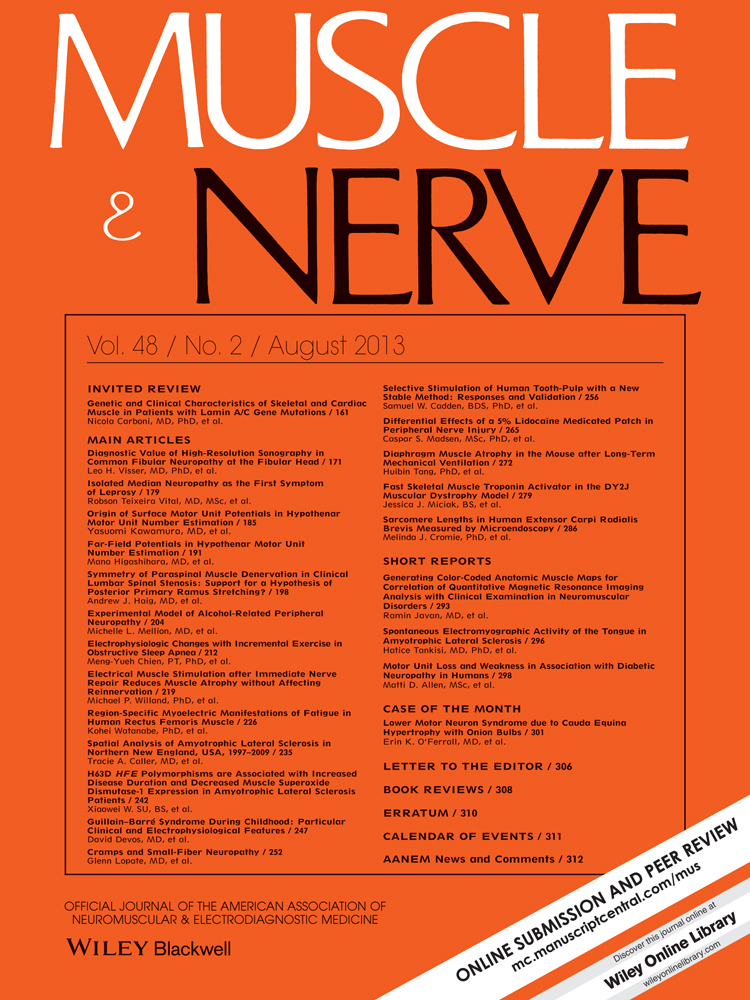Lower motor neuron syndrome due to cauda equina hypertrophy with onion bulbs
Dr. O'Ferrall was supported by a clinical fellowship grant from the Alberta Heritage Foundation for Medical Research and by a Talecris Fellowship at the Montreal Neurological Institute. Dr. Sinnreich was supported by grants from CIHR-ALS-MDAC, AFM, and FRSQ.
ABSTRACT
Introduction: Hypertrophy of the nerve roots of the cauda equina may occur with both acquired and inherited neuropathies. Although selective nerve root involvement of the sensory roots has been described and termed chronic inflammatory sensory polyradiculoneuropathy (CISP), selective involvement of the proximal motor roots has not been described. Methods: Clinical, electrophysiological, MRI, and pathological findings are reported. Results: Here, we report a patient with cauda equina hypertrophy presenting with a pure lower motor neuron syndrome without clinical or electrophysiological evidence of sensory fiber involvement. Bowel and bladder functions were spared. Nerve root biopsy demonstrated abundant onion bulb formations. The patient experienced improvement in motor function with immunomodulatory treatment. Conclusions: We suggest the term chronic immune demyelinating motor polyradiculopathy (CIMP) to describe this particular form of CIDP, thereby expanding the clinical spectrum of CIDP. Muscle Nerve, 48: 301–305, 2013




